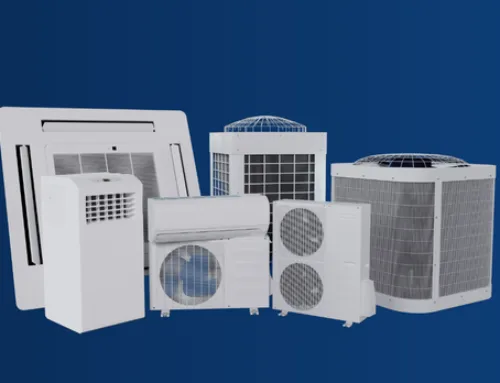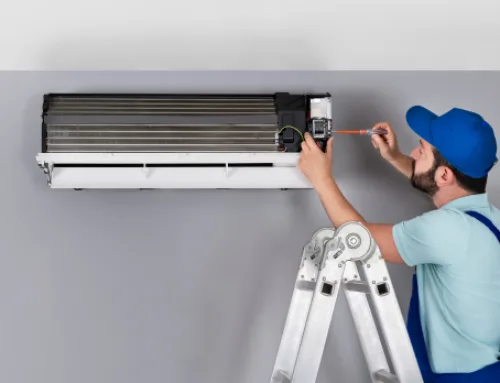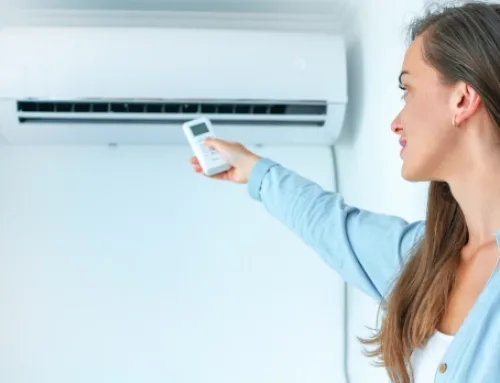Is your furnace dripping water? That is not normal at all! A leaking furnace can signal trouble. A few common issues may cause water around your furnace.
Condensation, clogged drains, or a malfunctioning humidifier could be the culprit. Understanding why your furnace leaks water is the key to fixing the problem. We’re here to break it down for you. Let’s get to the bottom of it.
In this blog, we will uncover the mystery and guide you on how to stop that unwanted drip.
Let’s start with understanding a few signs of leaking water from your furnace.
Signs of a Leaking Furnace
A leaking furnace can be a severe issue that needs immediate attention to prevent safety hazards and damage to your home. Here are some signs that may indicate a leaking furnace.
Rust or Corrosion
If you see rust or corrosion on your furnace or nearby pipes, it may mean water is dripping. Check for signs of wear and tear on these parts.
Rusty spots can reveal a leaking furnace, which can cause trouble. Corroded pipes and fittings nearby may hint at water leakage, too.
Examine your furnace components closely to catch any deterioration. Rust and corrosion are like red flags, warning you of potential leaks and problems in your heating system.
Look for these signs to keep your furnace in good working order.
Excessive Condensation
Excessive condensation around your furnace may indicate a leaking problem. When too many water droplets gather on the unit or nearby surfaces, it’s a sign that something is wrong.
A well-functioning furnace usually has some condensation, but it could mean trouble if there is a lot. Watch out for water forming, as it may suggest a leak in your furnace.
Too much condensation is not normal and may lead to more significant issues. You should contact a professional to check and repair the problem if you notice this.
Corroded Flue Pipe
Inspecting the flue pipe for corrosion is crucial to ensure the furnace’s proper functioning.
Corroded flue pipes showing signs of rust or decay can create a pathway for water to enter the furnace system. This is a concern because water infiltration can lead to a leaking furnace.
When the flue pipe corrodes, it weakens the structure and makes it susceptible to cracks and holes.
These openings can permit water to seep into the furnace, cause damage to the internal components, and affect its performance.
Regular checks for corrosion help prevent such leaks to ensure the furnace operates efficiently and safely without the risk of water-related issues.
Common Causes of Furnace Water Leaks
A furnace water leak can be a concerning issue that needs prompt attention. Several common causes might lead to leaks from a furnace. Here are some possibilities:
Corroded Secondary Heat Exchanger
A cracked or corroded heat exchanger is a common reason for water leaks in the furnace. The heat exchanger’s job is to move heat from burning stuff to the air.
If it is damaged, water can escape. Think of it like a leaky roof but in your furnace. The cracks or corrosion make water sneak out where it should not.
So, if you spot water around your furnace, the heat exchanger may be playing a leaky game.
Malfunctioning Humidifier
A common cause of furnace water leaks is a leaking humidifier. Furnaces often have humidifiers to add moisture to the air in your house during the winter.
Water can gather around the furnace if there is a leak in the humidification system. This happens when the water intended for the air becomes a puddle on the floor.
The leak may be due to a crack in the humidifier, a loose connection, or a clogged drainage tube.
Regularly checking and maintaining your humidifier can help prevent these leaks and keep your furnace intact. If the problem still exists then you should install a new humidifier.
Blocked Drain Lines
One common reason for water leaks in the furnace is clogged drain lines. These are like the pipes in our homes that carry away dirty water.
In the furnace, dirt or small particles can block these drain lines. When this happens, water cannot flow out properly, which can cause leaks.
When furnace drain lines are clogged, water has nowhere to go and leaks where it should not.
Drain Pan Has a Leak
Cracks in a drain pan can lead to furnace water leaks. The drain pan sits beneath your furnace and is designed to collect water that might accumulate during the heating or cooling. If the pan develops cracks, water can escape and cause leaks.
These cracks often form due to wear and tear over time or corrosion. When the durian pan is compromised, it fails to contain the water properly and allows it to seep out.
Consequently, this can result in water damage to your furnace and surrounding areas, which leads to potentially costly repairs.
A Blocked Air Return
A blocked air return is when something blocks airflow into the furnace. This blockage can happen due to dust, debris, or furniture covering the return vent.
When the air return is blocked, the furnace has to work harder to pull in air, which leads to potential heating. This strain on the furnace can cause the heat exchanger to crack, resulting in water leaks. In simple terms, a blocked air return makes the furnace struggle, and this can eventually lead to water leaks.
It can also cause damage and reduce the efficiency of the heating system.
A Blockage in the PVC Vent Pipe
A blockage in the PVC vent pipe is another cause of furnace water leaks. The vent pipe allows harmful gases to exit the furnace.
When it gets blocked, gases cannot escape, leading to pressure buildup. This pressure forces water vapour to condense inside the furnace, which results in leaks.
Blockages often occur due to debris obstructing the vent, such as leaves or bird nests.
Regular maintenance is vital to prevent these issues and ensure the furnace’s proper functioning. A blocked PVC vent pipe can damage water and pose safety risks if overlooked.
Dirty Furnace Filter
Another common reason for the furnace water leak is a dirty furnace filter. When the filter is dirty, it restricts the airflow, making the furnace work harder. This increased strain can lead to the evaporator coil freezing, causing water to leak from the system.
A clogged filter also reduces heat exchange efficiency, which leads to condensation buildup that may leak.
Regularly changing the furnace filter helps maintain proper airflow and prevents water leaks. If the filter is neglected, the system becomes less efficient, potentially causing water-related problems in the furnace.
Problems With the Condensate Pump
Condensate pumps in furnaces can pose problems, often leading to water leaks. If the pump fails, water accumulates and may overflow. This overflow is a common cause of furnace water leaks.
A malfunctioning pump might result from a clogged drain line, causing water backup. Moreover, pump failure can stem from motor issues or float switch malfunctions.
Routine maintenance, like clearing clogs or checking pump components, can help prevent these problems. This is necessary for efficient operation and averting potential water damage from leaks.
Faulty Blower Motor
The blower motor is responsible for circulating air through the heating system, and when it malfunctions, it can lead to condensation buildup. This excess moisture might then leak out, causing water damage.
The blower motor failure can be due to wear and tear, electrical problems, or improper maintenance.
Regular inspection and timely replacement of a malfunctioning blower motor are crucial to prevent furnace water leaks.
If left unaddressed, a faulty blower motor can result in water damage and a decline in the furnace’s overall efficiency.
You can read our recent article as you may also want to know what the blinking yellow light on your Carrier furnace means.
Steps to Diagnose a Furnace Water Leak
- Before inspecting the furnace, turn off the power and gas supply to ensure safety. Wear appropriate safety gear, such as gloves and safety glasses.
- Look for signs of water leaks around the furnace. Check the floor, walls, and nearby components for any visible water. Note the location and severity of the water leak.
- Furnaces with high efficiency often have a condensate drain system. Inspect the condensate drain pipe and trap for any blockages or leaks. Clear any debris or obstructions that might be causing a backup.
- If your furnace is equipped with a humidifier, check it for leaks. Inspect the water supply line and the humidifier unit for any visible issues. Replace any damaged or worn-out parts.
- Inspect the seals and connections around the vent pipe to ensure no gaps or damages allow water to enter or leak.
If you cannot identify the source of the water leak or if you find any major issues, it is advisable to contact a qualified HVAC technician. They have the expertise and tools to diagnose and fix furnace problems safely.
DIY Solutions for Minor Furnace Leaks
While it is important to note that DIY solutions for furnace issues must be approached cautiously, you can try a few things for minor furnace leaks.
- If your furnace leaks, a simple solution is to check the condensate drain line. Look for a tube near the furnace, the drain line. Leaks happen when it gets clogged. Get a wet/dry vacuum or a small brush. Put it in the tube to clear any blockages. This helps the water flow out, stopping the leaks.
- If your furnace has a condensate pump, ensure it works properly. Test the pump by pouring a small amount of water into the pump’s reservoir. If it does not activate, it may need cleaning or replacement.
- If your furnace is equipped with a humidifier, check for leaks. Tighten any loose connections or replace damaged components.
- Check for any visible leaks around the flue pipe. If you find a leak, use high-temperature silicone or metal tape to seal the gap temporarily. However, consider this a temporary fix and consult a professional for a permanent solution.
- Inspect the connections between pipes, joints, and fittings. Tighten any loose connections using a wrench or appropriate tool.
- If you notice leaks around gaskets or seals, consider replacing them. Turn off the furnace, let it cool, and replace damaged gaskets.
Remember that these solutions are temporary and might not suit all situations. If you are unsure or the problem persists, it is best to call a licensed HVAC professional to assess and repair the issue.
Conclusion
A leaking furnace can be attributed to various issues, such as condensation, clogged drain lines, or a malfunctioning heat exchanger.
Regular maintenance and prompt repairs are crucial to prevent water damage and ensure the efficient operation of your heating system.
If you notice water around your furnace, it is essential to address the issue immediately to avoid potential hazards and costly damage.
At Infiniti Home Comfort, we bring 15 years of expertise to diagnose and fix your furnace system problems efficiently and we offer professional furnace repair and installation services. You can trust us for reliable repair and maintenance to keep your house warm and comfortable.




